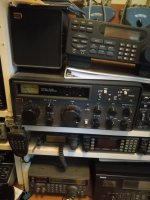pjxii
Member
There is a great deal of helpful information from Rob Sherwood's list but, as you stated, it is sorted by narrow spaced dynamic range which is most important for amateur operators in a contest and not necessarily the most important specification for everyone's needs (it's not my top criteria). There's a PDF on his site which goes over all that and explains what the data actually means in a receiver which helps a lot.But, it is important to remember that that list is sorted by third order dynamic range narrow spaced. Or, (if I remember right), dynamic range at 2 kHz spacing. So when you say "specs are pretty bad compared to a modern receiver with crystal or mechanical IF filters" you really have to indicate which specs you mean. Sensitivity, phase noise, noise floor, image rejection, etc, can be very good in those older radios.


